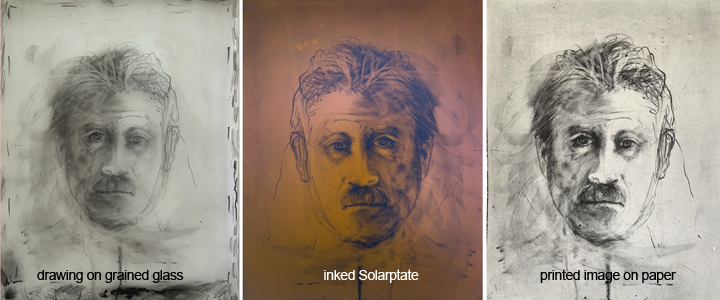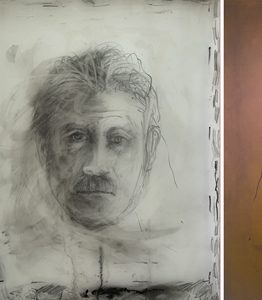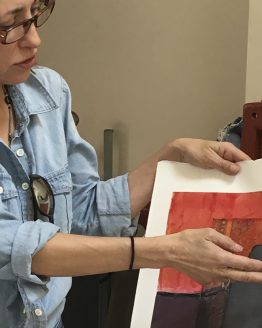
Creating an original drawing on grained glass is a fabulous way to get a wide tonal range without the use of computers, photoshop, ink jet printers, or a transparency. The glass itself becomes the transparency and with practice there is no need to use an aquatint screen. The surface of grained glass offers a silky tooth much like your favorite paper or a litho stone.
You will learn how to prepare two glass surfaces by graining them together with carborundum grit. Once the glass is prepared you can draw, paint, use washes and even embed textures. You will learn how to create a suitable contact frame and see how to expose your image in the sun or with an exposure unit.
This 2 hour interactive demo includes questions from participants followed by optional 30 minute individualized Confer and Critique Add-On sessions that may be purchased in advance below or at checkout. Additional hour long Confer ‘n Critique sessions may be scheduled by appointment.
Note: If working in your own studio a press is necessary for printing photopolymer plates and is not suitable for hand printing.
For a full hands-on engagement you will need the following:
- Two pieces of glass preferably 3/16″ or thicker with sanded edges. Glass should be 1″ larger all around than photopolymer plate to be exposed.
- 1lb 220 carborundum grit
- A tray large enough to move the glass around
- Backing for contact frame- this can be 3/4″ plywood or some other rigid surface cut to the same size as glass.
- 4-6 spring clamps
- Soft, thin cushion cut to same size as backing. Two layers of rubberized shelf liner is perfect- the darker the better. Rubberized shelf liner is also great to use beneath ImagOn plates when inking and wiping.
- A seconds timer
- Photopolymer plate(s)- ImagOn, KM, Solarplate, etc.
- A stochastic (aquatint dot screen) OPTIONAL
- drawing implements- there is a wide range of options. Some examples are black stabilo aquarelleable pencils, litho crayons and tusch, india ink, soft charcoal pencils, etc.

